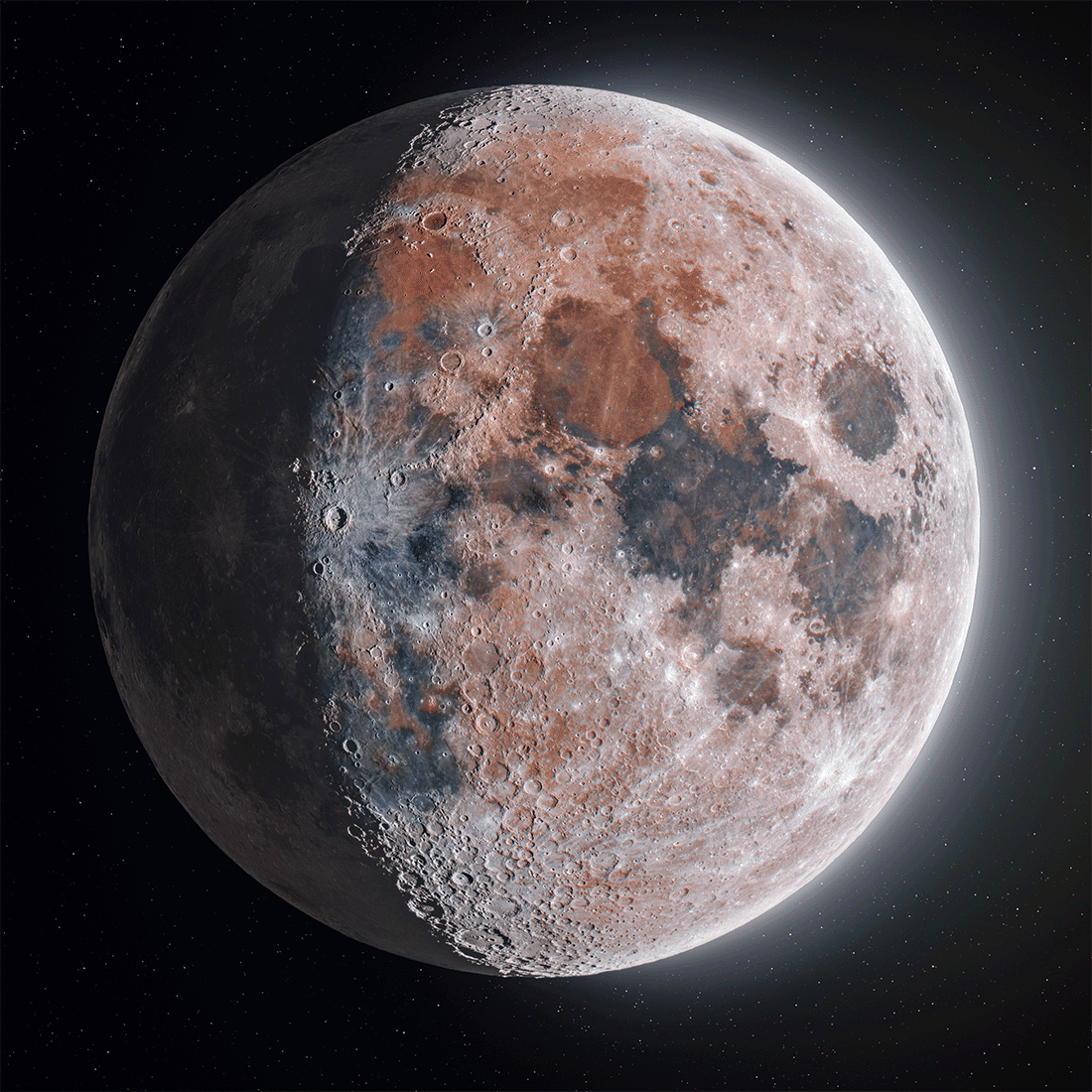Two astrophotographers have combined their talents to take the “most ridiculously detailed” photo of the Moon, and gosh is our natural satellite pretty. Andrew McCarthy and Connor Matherne combined their considerable talents to create a composite image that took 250,000 shots and many months to put together for one final incredible image.
“Connor was responsible for the color, while I was responsible for the details,” McCarthy told IFLScience. “To produce the high-quality image, we each had to capture a high number of images. I captured 200,000 up-close surface detail shots, while Connor captured 50,000 full-color shots of the full lunar disc. When combined, this gave us a final image with incredible fidelity and rich color.”
“The Hunt for Artemis”, as they have called the image, is a whopping 174-megapixel shot released ahead of the inaugural Artemis mission launching next week that will eventually take humans back to the Moon. The beautiful photo is available as a limited edition print from McCarthy’s astrophotography website, so you can even own this little bit of history in the making.
The colors shown in the image are real, McCarthy assured us, just spruced up for our poor human eyes.
“The color on the Moon is real, but far too subtle to be observed with our relatively primitive eyes. Scientific instruments are much more sensitive, and can detect these minor color variations,” he told IFLScience.
“The most colorful areas are basaltic lava, referred to as lunar “seas” and are visible to the naked eye from Earth as dark patches on the Moon. Reddish areas are rich in iron and feldspar, while more blue areas are rich in titanium.”

Scientific instruments can indeed see what we cannot – JWST is a prime example of that, revealing our planets in glorious infrared – but the equipment used by both is readily available.
Matherne used an 8-inch Meade LX80 ACF telescope and a 7D Mark II DSLR to capture the Moon in full color, while McCarthy used a Celestron C11 telescope with an ASI174mm camera and an infrared pass filter to capture the crisp details.
“This image is a love letter to the upcoming Artemis I mission, the first human-rated lunar launch vehicle in 50 years,” McCarthy said on Twitter. When humans set foot on the lunar surface in the coming years we can expect many more gloriously detailed images of our natural satellite.
Source Link: Astrophotographers Take “Most Ridiculously Detailed” Moon Photo And It’s Breathtaking